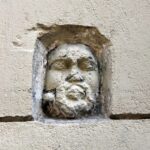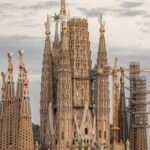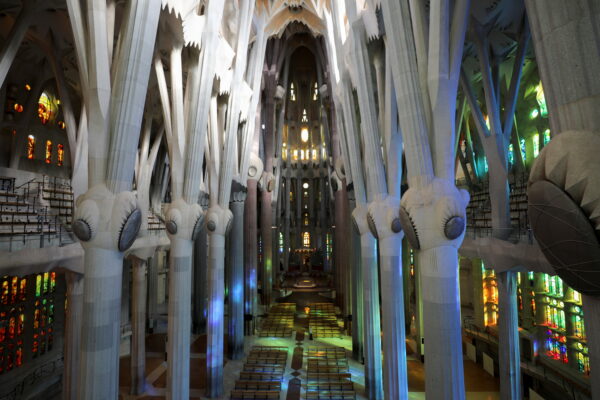
- The Construction Timeline of the Sagrada Familia: Key Milestones
- Anticipated Completion Date of the Sagrada Familia: What to Expect
- Historical Context of the Sagrada Familia: A Journey Through Time
- Architectural Features of the Sagrada Familia: A Masterpiece in Progress
- Challenges Faced in Completing the Sagrada Familia: Hurdles and Solutions
- The Significance of the Sagrada Familia Completion: Cultural and Spiritual Impact
The Sagrada Familia, an iconic symbol of Barcelona, has captivated visitors for over a century with its intricate design and unique architecture. Designed by the renowned architect Antoni Gaudí, the basilica has been under construction since 1882 and continues to be a work in progress, leaving many to wonder about its future.
As anticipation builds for its completion, the question on many minds remains: Sagrada Familia Finish Date: When Will It Be Completed? With ongoing efforts and funding, the final phases of construction are now in sight, but the timeline for completion remains a topic of debate among experts and enthusiasts alike.
The Construction Timeline of the Sagrada Familia: Key Milestones
The construction of the Sagrada Familia has been marked by several key milestones that reflect both its historical significance and architectural innovation. Initially started in 1882, the project was handed over to Antoni Gaudí in 1883, who dedicated the next 43 years to its vision. Under his leadership, the basilica began to take shape, with Gaudí introducing revolutionary techniques that have influenced modern architecture.
In the 1930s, progress on the Sagrada Familia faced significant setbacks due to the Spanish Civil War, during which much of Gaudí's original plans were lost. Despite these challenges, reconstruction efforts resumed in the 1950s, guided by the remaining sketches and models. The following decades saw the completion of several major components, including:
- The Nativity Facade (completed in 1935)
- The Passion Facade (completed in 1976)
- The central tower of Jesus Christ (expected to be completed by 2026)
As of today, the ongoing efforts have brought the Sagrada Familia closer to its anticipated completion date. With the goal set for 2026, in honor of the centenary of Gaudí's death, the project has gained renewed momentum. The remaining work focuses on finalizing the towers and intricate details of the facade, with advanced technology being utilized to ensure precision in the construction process.
The Sagrada Familia is not just a building; it symbolizes a profound journey through art and faith. The timeline of its construction reflects the dedication of countless artisans, architects, and workers who have contributed to this masterpiece over the generations. As we await its completion, the basilica stands as a testament to human creativity and perseverance.
Anticipated Completion Date of the Sagrada Familia: What to Expect
The anticipated completion date of the Sagrada Familia has become a major point of discussion among architecture enthusiasts and tourists alike. While many hope to see the basilica finished by 2026, the centenary of Antoni Gaudí's death, several factors could influence this timeline. As the construction progresses, it is essential to consider both the challenges and advancements that may impact the completion date.
Currently, the main focus of construction is on the towers and the intricate details of the facades. The use of modern technology has significantly sped up the process, allowing for enhanced precision in the work being done. Key areas that are being addressed include:
- Finalizing the central tower of Jesus Christ
- Completing the remaining three towers dedicated to the Evangelists
- Adding decorative elements to the Nativity and Passion facades
Despite the ambitious goal of completing the Sagrada Familia by 2026, experts caution that this timeline is subject to change. Various factors, such as funding, construction conditions, and the ongoing impact of global events, could lead to adjustments in the expected finish date. Nonetheless, the general sentiment remains optimistic as the project continues to evolve.
As we look ahead, visitors can expect to witness a remarkable transformation of the Sagrada Familia, embodying Gaudí's unique vision. Regardless of the exact completion date, the basilica will undoubtedly remain a symbol of creativity and dedication, drawing millions who are eager to experience its awe-inspiring beauty.
Historical Context of the Sagrada Familia: A Journey Through Time
The Sagrada Familia's history is intertwined with the cultural and artistic movements of its time. Begun in the late 19th century, it stands as a reflection of the Catalan Modernisme movement, which aimed to create a distinct architectural identity in Spain. During this period, Barcelona was transforming, driven by industrialization and a renewed interest in local traditions and crafts.
Gaudí's approach to the Sagrada Familia was groundbreaking, incorporating natural forms and religious symbolism into his design. His innovative techniques, such as hyperboloid structures and catenary arches, not only pushed architectural boundaries but also laid the groundwork for future generations of architects. Key historical moments include:
- 1882: Initiation of construction under architect Francisco de Paula del Villar.
- 1883: Gaudí takes over the project, infusing it with his distinctive vision.
- 1936: The Spanish Civil War disrupts progress, causing significant loss of original plans.
- 1950s: Reconstruction efforts begin, guided by Gaudí's surviving sketches.
The basilica has not merely evolved architecturally; it embodies a rich tapestry of faith, art, and community. As each generation adds its contributions, the Sagrada Familia evolves into a collaborative masterpiece. Today, it continues to draw inspiration from both traditional craftsmanship and modern technology, creating a bridge between past and present.
Looking ahead, the Sagrada Familia remains a symbol of resilience and dedication in the face of adversity. Its construction story reflects the enduring spirit of the city of Barcelona and its people, who see the basilica as an essential part of their cultural heritage. With each completed section, the Sagrada Familia not only transforms the skyline but also enriches the narrative of a city deeply rooted in artistic expression and architectural innovation.
Architectural Features of the Sagrada Familia: A Masterpiece in Progress
The Sagrada Familia is renowned for its distinctive architectural features, which seamlessly blend nature and spirituality. Gaudí's design is heavily inspired by organic forms, evident in the basilica's towering spires and intricate facades. The use of geometry not only enhances aesthetic appeal but also contributes to structural integrity, creating a harmonious balance that draws admiration from all who visit.
One of the most fascinating aspects of the Sagrada Familia is its symbolic facades. Each facade tells a different story, representing key moments in the life of Jesus Christ. The Nativity Facade celebrates his birth with vibrant details, while the Passion Facade poignantly depicts the crucifixion. Visitors can explore these narratives through:
- Elaborate sculptures showcasing biblical scenes
- Intricate carvings that reflect Gaudí's deep faith
- A dynamic interplay of light and shadow that changes throughout the day
Moreover, the interior of the Sagrada Familia is equally breathtaking, designed to mimic a forest with its tree-like columns and colorful stained glass windows. This design choice not only enhances the spiritual ambiance but also allows natural light to flood the space, creating a serene atmosphere. The play of light is particularly notable in:
- The vibrant colors of the stained glass, which change with the sun's position
- The lofty ceilings that invoke feelings of awe and tranquility
- The overall layout that encourages contemplation and reflection
As the Sagrada Familia continues to evolve, it stands as a testament to Gaudí's visionary approach and the collective effort of countless artisans. Each completed section of this architectural masterpiece adds to its ongoing legacy, captivating new generations and inviting them to experience its beauty. The basilica is not merely a structure; it embodies a journey through art, faith, and creativity that transcends time.
Challenges Faced in Completing the Sagrada Familia: Hurdles and Solutions
The journey toward completing the Sagrada Familia has been fraught with numerous challenges that could potentially delay its anticipated finish date. A primary hurdle has been the funding issues, as the construction relies heavily on private donations and ticket sales from visitors. Fluctuations in financial support can impact the pace of work, necessitating strategic planning and ongoing fundraising efforts to ensure the project continues moving forward.
Another significant challenge involves the adaptation of modern construction techniques to Gaudí's original vision. Balancing the use of advanced technology with traditional craftsmanship requires skilled artisans who can interpret Gaudí's complex designs. To address this, the project team has invested in training programs and workshops, ensuring that the workforce is equipped with the necessary skills to meet the unique demands of the basilica's architecture.
Environmental factors also pose threats to the construction timeline. The Sagrada Familia is located in a busy urban setting, making it essential to manage construction disruptions effectively. This has led to the implementation of detailed traffic management plans and noise-reduction strategies to minimize the impact on both the site and the surrounding community, facilitating smoother progress in construction.
Lastly, the unexpected challenges brought on by global events, such as the COVID-19 pandemic, have had a substantial impact on the timeline. Safety protocols and restrictions can lead to temporary work stoppages, requiring project managers to reassess schedules regularly. Through these hurdles, the commitment to completing the Sagrada Familia remains unwavering, as each obstacle encountered is met with innovative solutions and a resilient spirit.
The Significance of the Sagrada Familia Completion: Cultural and Spiritual Impact
The completion of the Sagrada Familia is poised to have a profound cultural impact on both Barcelona and the global architectural community. As a landmark symbol of faith and creativity, the finished basilica will serve as a beacon for visitors seeking inspiration and connection to the arts. Its intricate designs and innovative construction techniques will continue to influence future architects, demonstrating the lasting legacy of Antoni Gaudí's vision.
Beyond its architectural significance, the Sagrada Familia embodies a deep spiritual resonance for many. For countless visitors, the basilica is not just a site of admiration but a space for reflection and prayer. The completion of this masterpiece will enhance its role as a spiritual center, fostering a sense of community among individuals from diverse backgrounds. Key aspects of its spiritual impact include:
- Providing a sanctuary for worship and contemplation
- Serving as a pilgrimage site for those seeking spiritual growth
- Encouraging collective experiences through cultural events and celebrations
The anticipated completion will also reinforce the Sagrada Familia's status as a UNESCO World Heritage site, helping to preserve its historical and artistic significance for future generations. As the basilica nears its finish, it will undoubtedly attract increased attention, fostering a greater appreciation for the intersection of art and spirituality. This evolution could lead to enhanced educational opportunities, allowing visitors to engage more deeply with its rich history and meaning.
Ultimately, the completion of the Sagrada Familia will mark a pivotal moment in the cultural landscape of Barcelona, simultaneously celebrating its past while looking forward to a vibrant future. The basilica stands as a testament to creative collaboration, embodying the spirit of a city that embraces both tradition and innovation.
 Admission Required: Casa Batlló is not free
Admission Required: Casa Batlló is not free Left on Carrer dels Escudellers, continue to Carrer d'Avinyó
Left on Carrer dels Escudellers, continue to Carrer d'Avinyó Casa Batlló: Not in Park Güell!
Casa Batlló: Not in Park Güell! When Was La Sagrada Familia Barcelona Built? A Fascinating Journey Through Time
When Was La Sagrada Familia Barcelona Built? A Fascinating Journey Through Time The Sagrada Familia in Barcelona: When Will it Be Finished?
The Sagrada Familia in Barcelona: When Will it Be Finished?If you want to know other articles similar to Sagrada Familia Finish Date: When Will It Be Completed? you can visit the category WHERE YOU CAN GO.
Deja una respuesta










Read more!